AntiqueMac
Hot Rolled
- Joined
- Jun 17, 2003
- Location
- Florida Mountains!
In another thread it was suggested that I post pictures of the first several Types of Starrett's #56 surface gauge.
Since the author of the seminal antique tool Type Study was standing there looking at my drawers full of tools, I asked him to look at three of the early #56's I have. He confirmed he had the same Type-1, mint, in the original picture box.
So, below is the first time ever (as far as I know) presentation of what is the first model (Type-1) thru the fourth model (Type-4) #56. I am doing this first presentation in picture only form, with no descriptive text.
For those who question, all parts are correct and most likely original.
There is a mystery! Clearly stamped on two of my #56's (at the same time, by the factory!) is the information "Pat March 17 1897".
But, that is wrong! March 17th 1897 was a Wednesday and patents are only issued on Tuesdays. In fact, I don't know if the #56 was patented at all. However, patent #556703 was issued March 17, 1896 to Laroy S. Starrett and Charles P. Fay for a surface gage that looks exactly like the Starrett #55.
Here are the pictures:
TYPE-1:
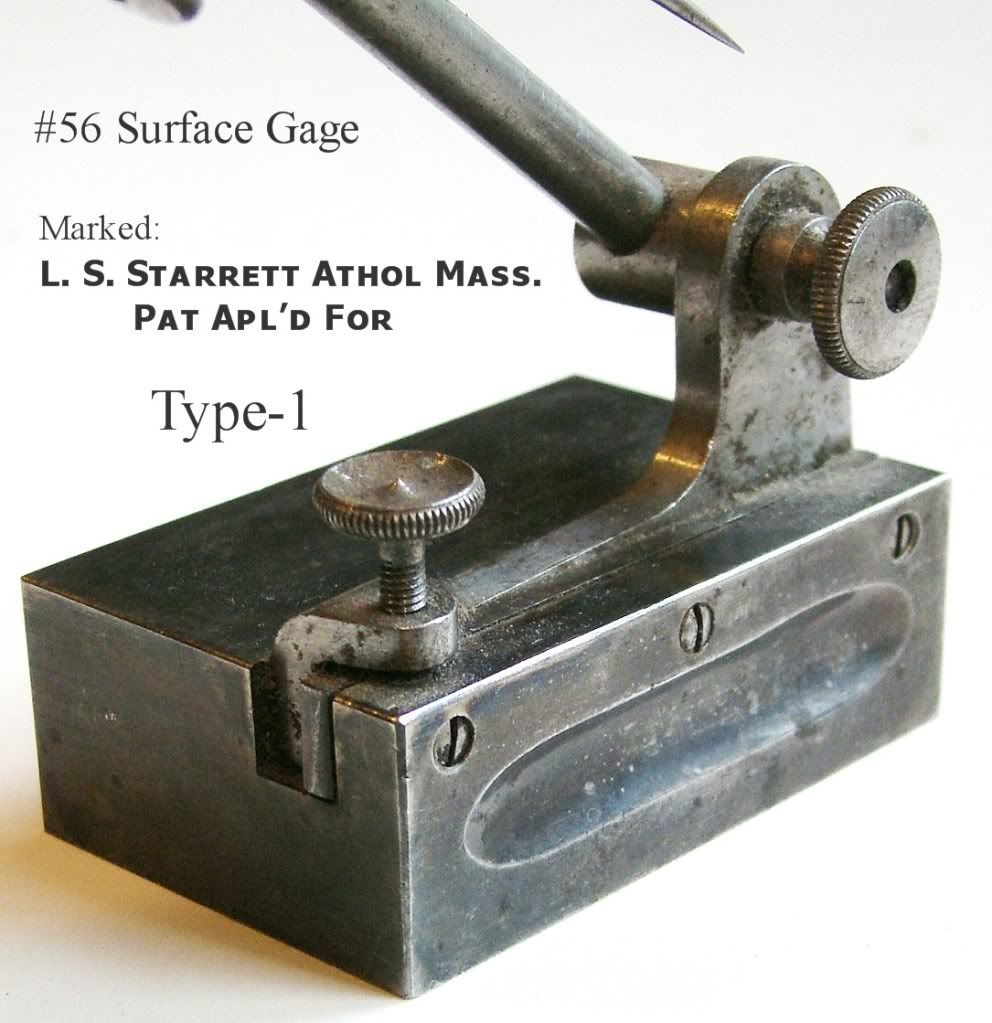
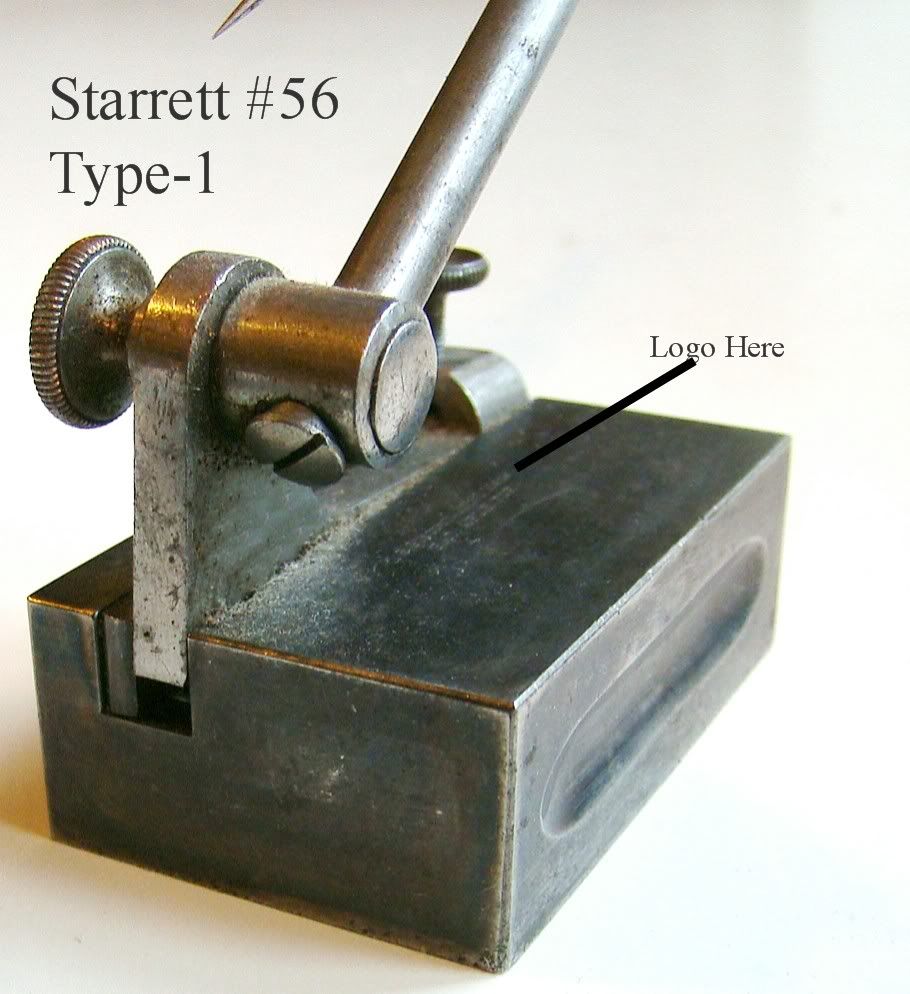
TYPE-2:
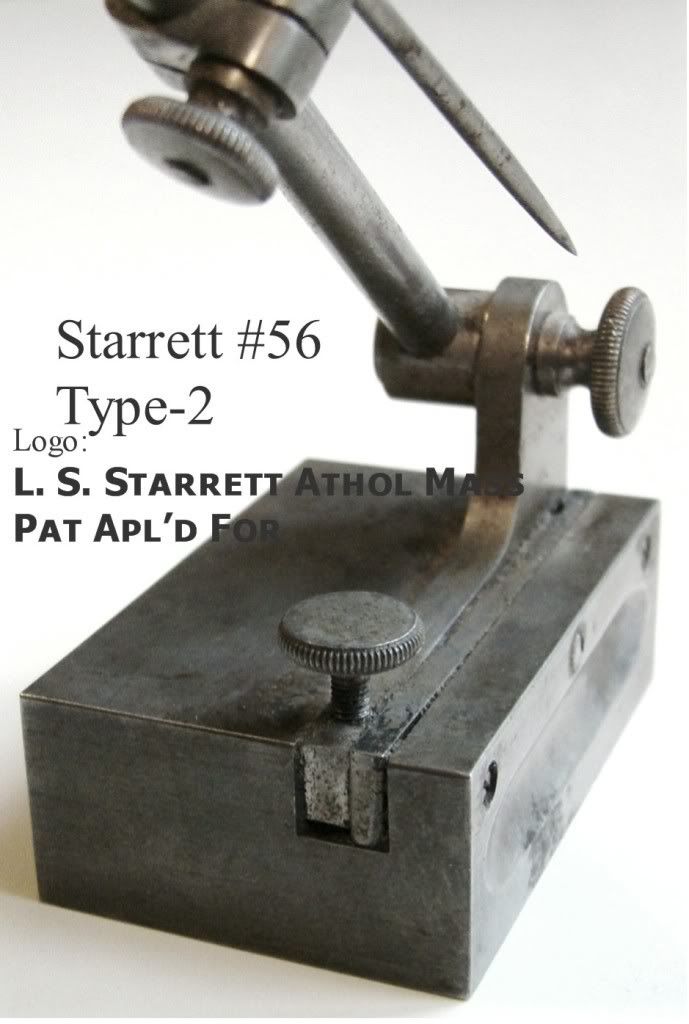
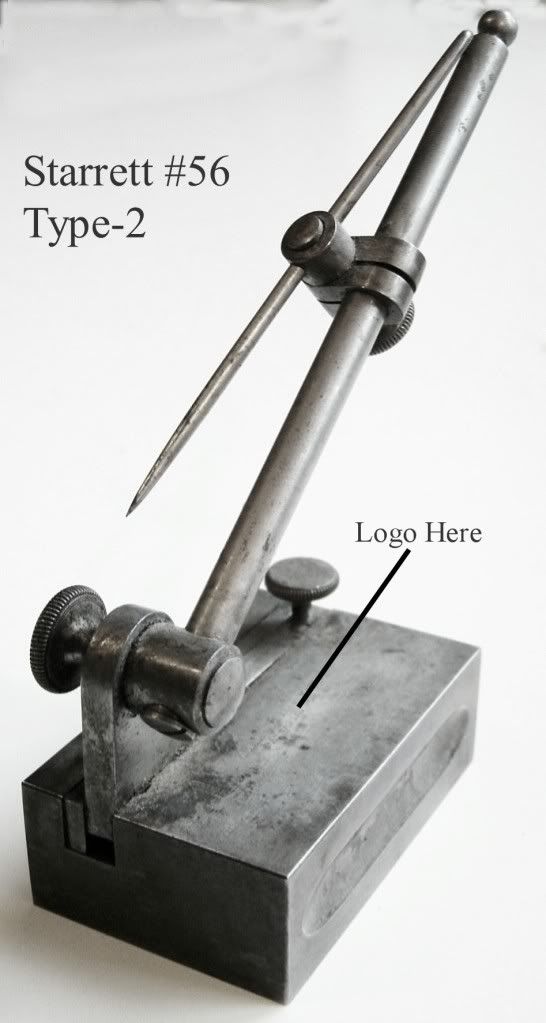
TYPE-3:

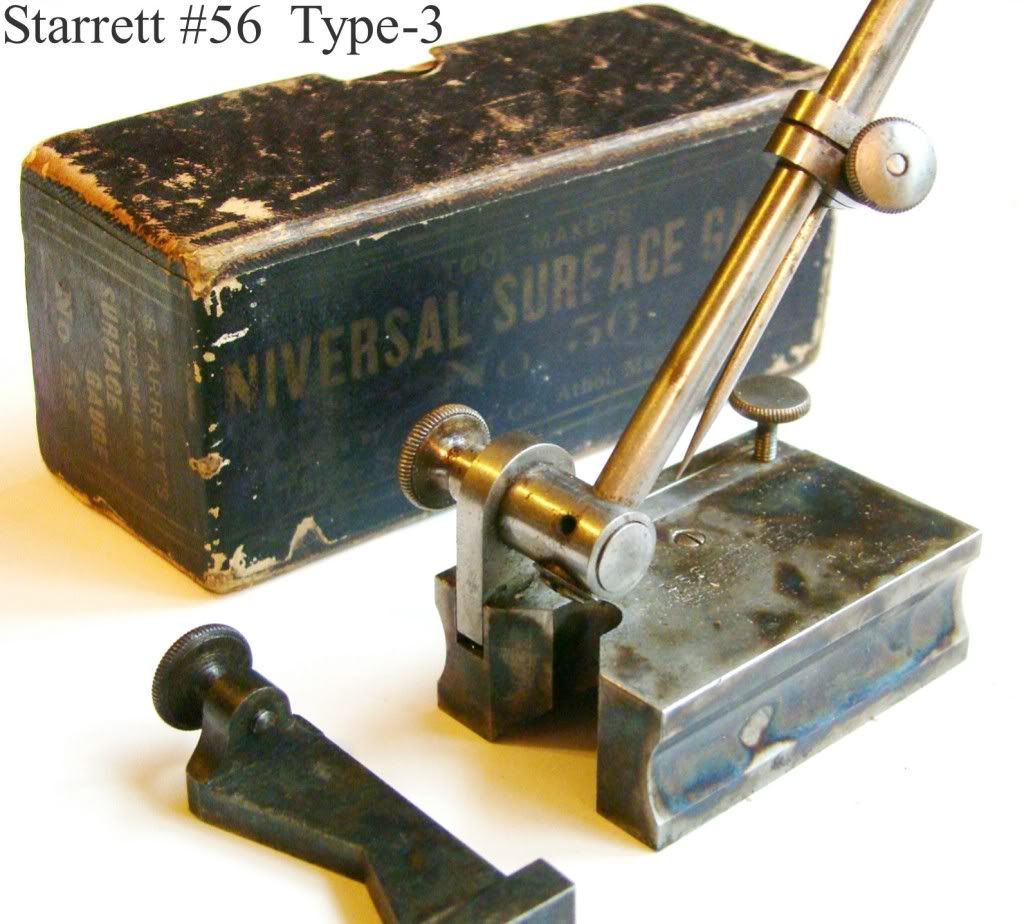
TYPE-4: (so far, but arguable)
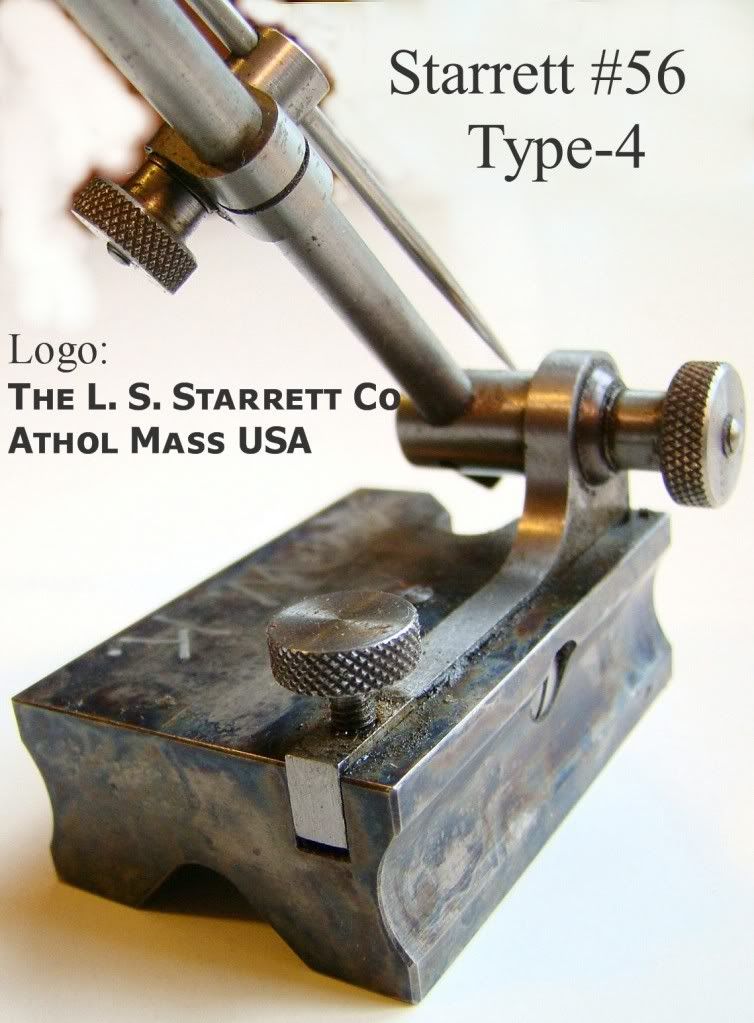

So, what variations do you have? Please post pictures.

Since the author of the seminal antique tool Type Study was standing there looking at my drawers full of tools, I asked him to look at three of the early #56's I have. He confirmed he had the same Type-1, mint, in the original picture box.
So, below is the first time ever (as far as I know) presentation of what is the first model (Type-1) thru the fourth model (Type-4) #56. I am doing this first presentation in picture only form, with no descriptive text.
For those who question, all parts are correct and most likely original.
There is a mystery! Clearly stamped on two of my #56's (at the same time, by the factory!) is the information "Pat March 17 1897".
But, that is wrong! March 17th 1897 was a Wednesday and patents are only issued on Tuesdays. In fact, I don't know if the #56 was patented at all. However, patent #556703 was issued March 17, 1896 to Laroy S. Starrett and Charles P. Fay for a surface gage that looks exactly like the Starrett #55.
Here are the pictures:
TYPE-1:


TYPE-2:


TYPE-3:


TYPE-4: (so far, but arguable)


So, what variations do you have? Please post pictures.








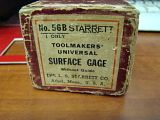
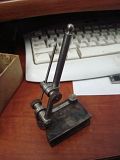
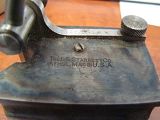

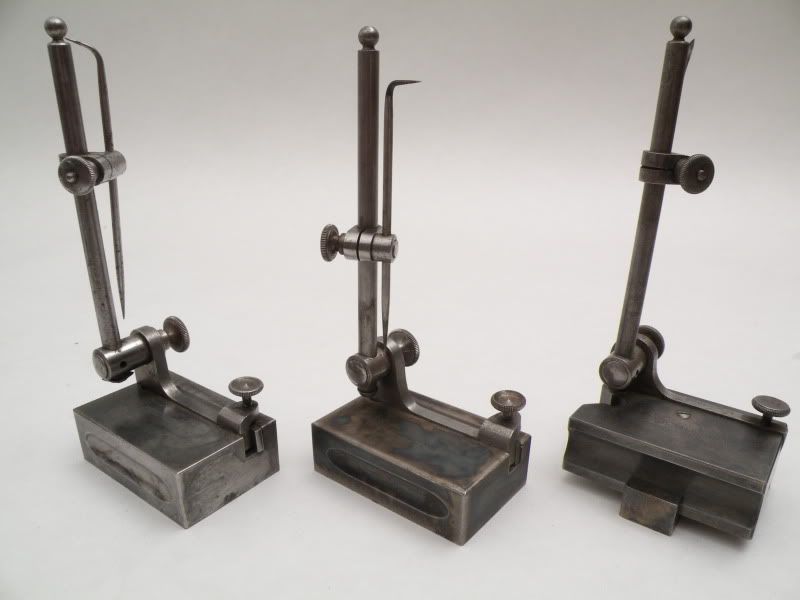
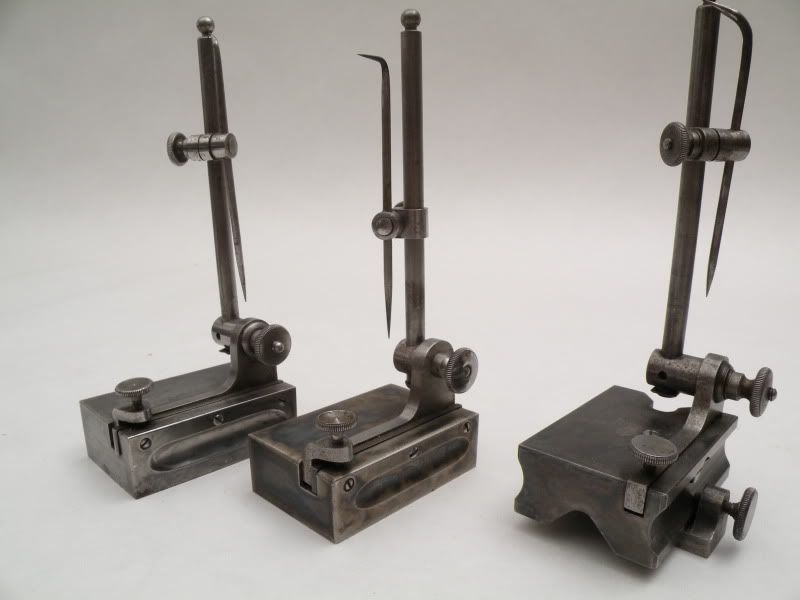
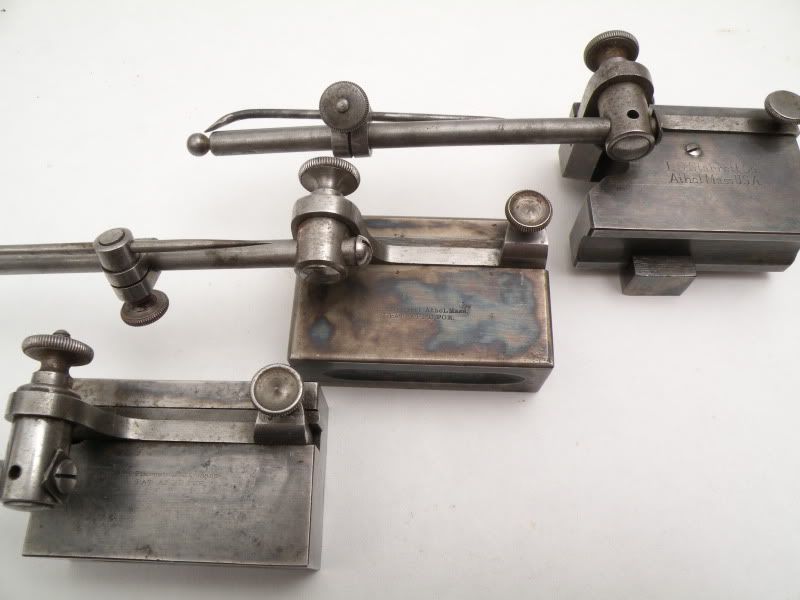
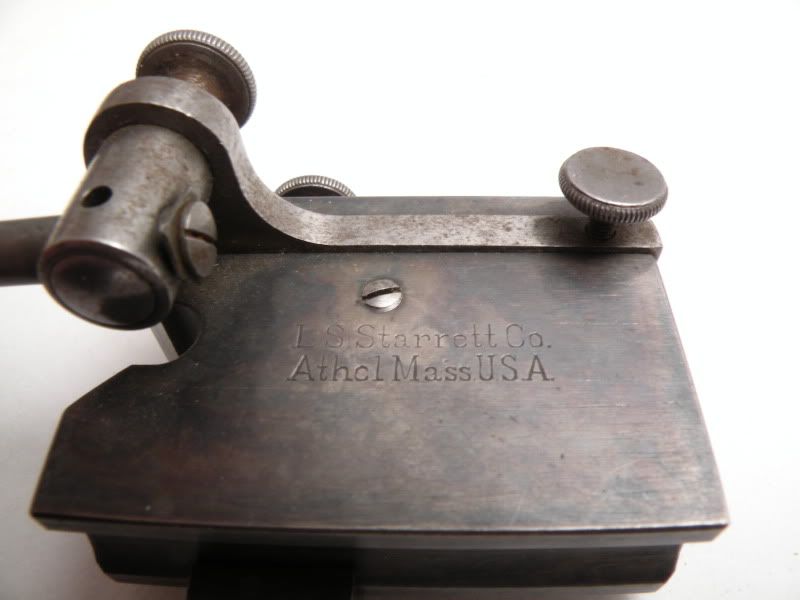
 Where do I put the Non-bent metal, no scribe version I have - what I originally called Type-2???
Where do I put the Non-bent metal, no scribe version I have - what I originally called Type-2??? And, for now, I'm dismissing the size variances in some of the parts (like the bent metal adjuster). Damn, I had Roger K. Smith here for two days. I should have had him do the study! He is very knowledgeable about machinist tools and is the producer of the best tool type study ever.
And, for now, I'm dismissing the size variances in some of the parts (like the bent metal adjuster). Damn, I had Roger K. Smith here for two days. I should have had him do the study! He is very knowledgeable about machinist tools and is the producer of the best tool type study ever.